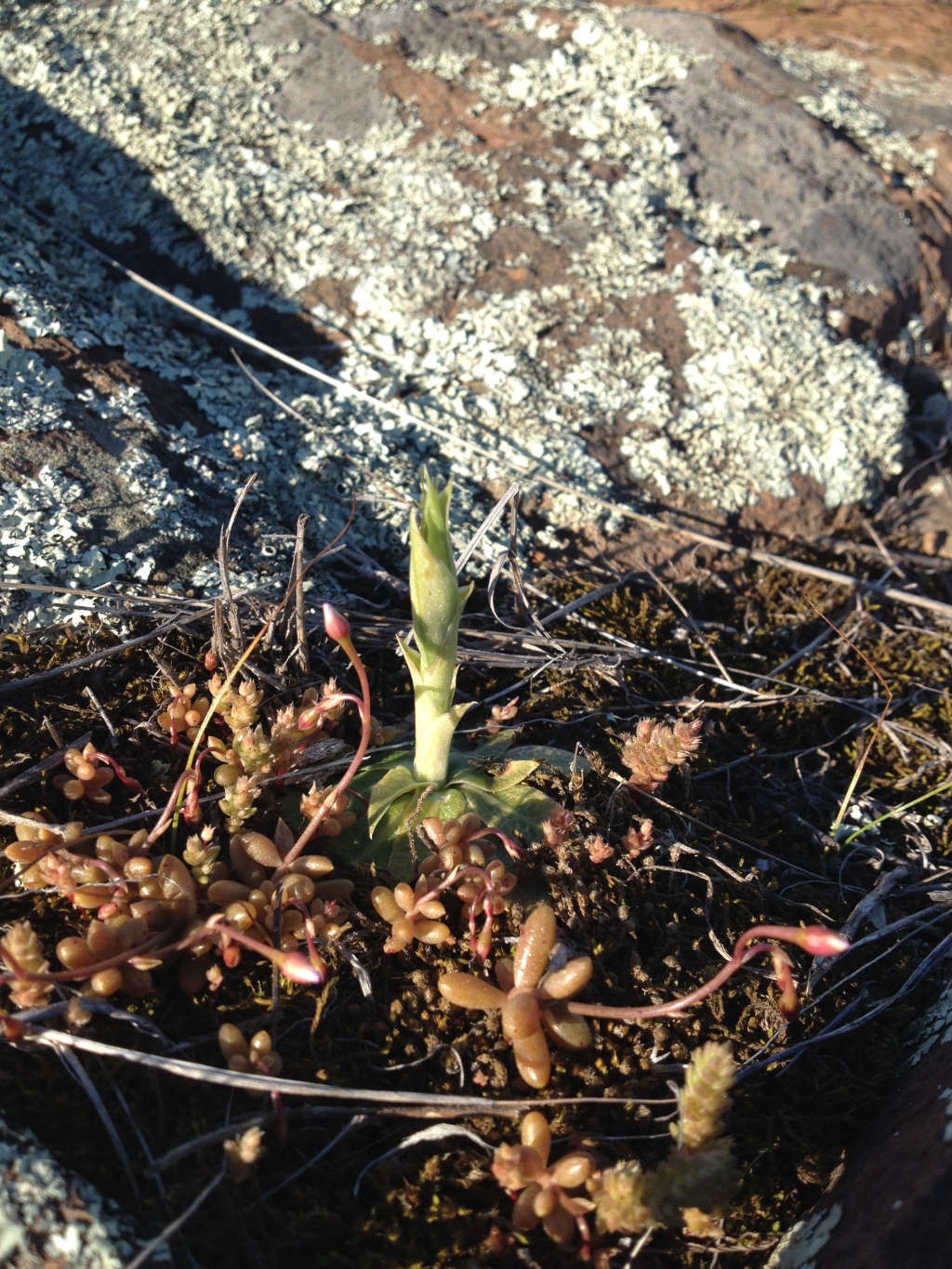Flowering plant to 20 cm tall, stem leaves 2–4, closely sheathing. Rosette leaves 8–14, ovate-lanceolate, 2–3 cm long, 6–12 mm wide, margins shortly ciliate. Flowers 2–6, porrect, 3–4 cm long, mostly green, sometimes with pale brownish suffusions, some transparent areas in the petals and galea; dorsal sepal with an upcurved filiform point 10–15 mm long; lateral sepals deflexed, conjoined part ovate in outline when flattened, shallowly concave, margins slightly incurved, densely ciliate, free points filamentous, 15–25 mm long, curved forwards, divergent, 1–2 cm apart at the tips; petals with a well developed proximal flange. Labellum ovate-oblong, 6–7 mm long, c. 2.5 mm wide, green, thick; marginal hairs in 8–12 pairs, 3–8 mm long, white, deflexed; basal lobe erect, with short sparse hairs. Flowers Oct.–Nov.
Wim, GipP, Gold. Known from a few grassy woodland sites between Charlton and Bendigo, on shallow soil among emergent granite or sedimentary rocks.

